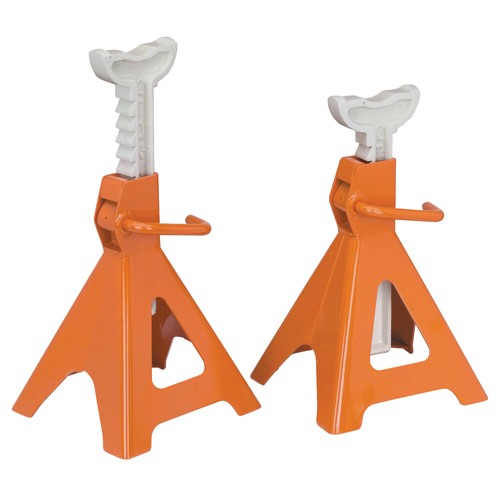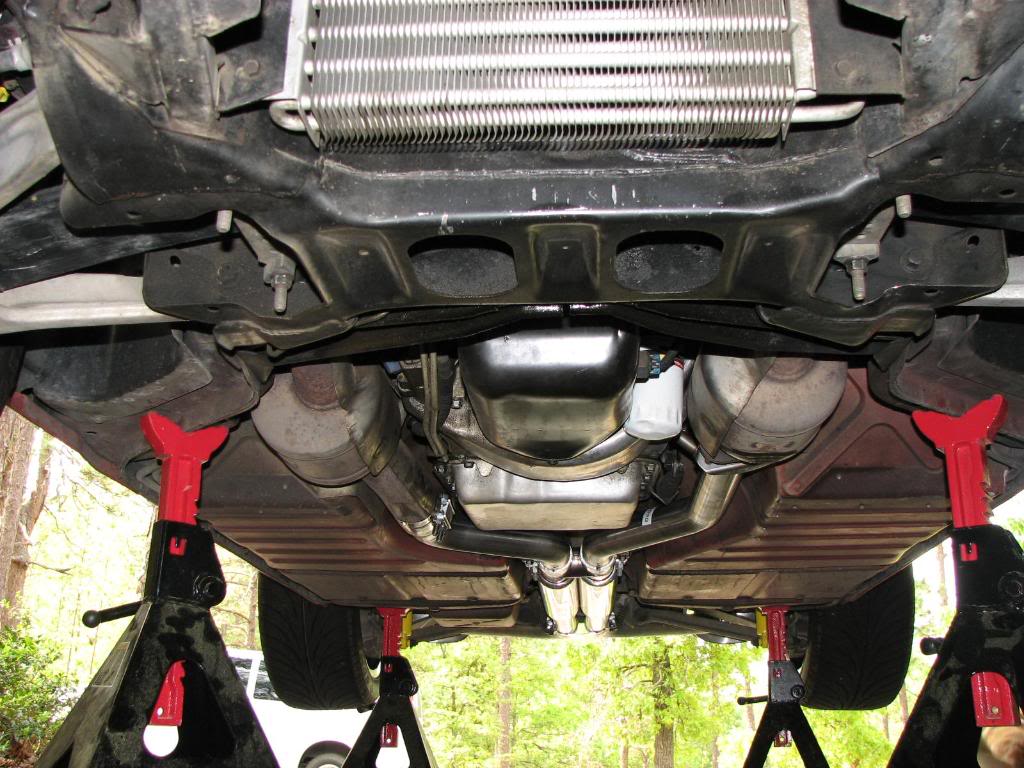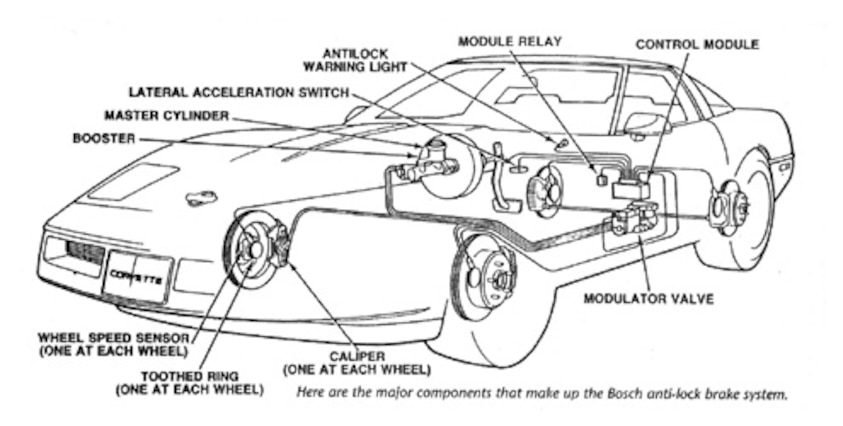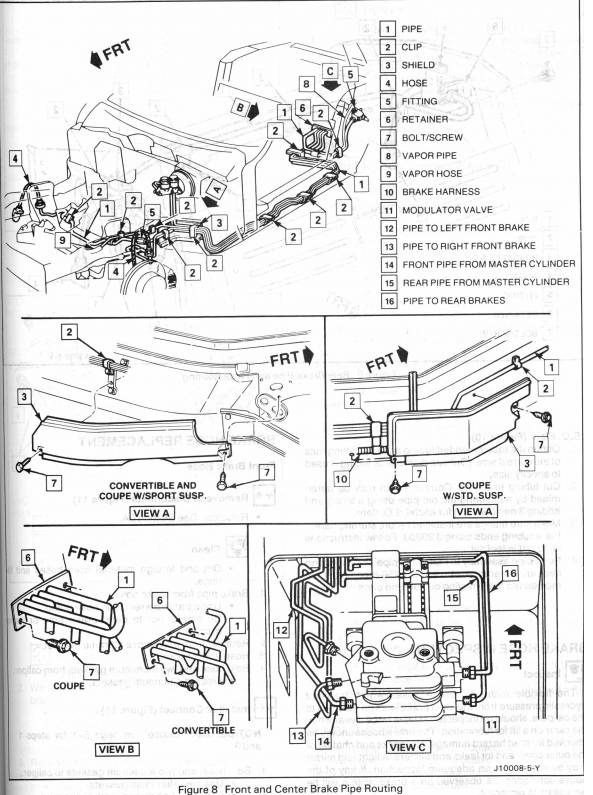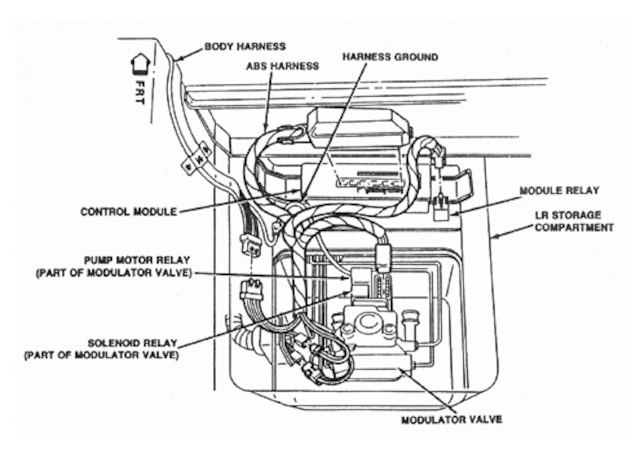CUNIFER
http://www.brakeconnect.com/cunifer-brake-line
The new ‘old’ material for brake lines
Last month I mentioned a `new’ product that has been around for years – only nobody knew about it. It is a material known as Cunifer – an alloy of copper and nickel with a bit of iron and manganese thrown in for good measure.
In the world of metallurgy, this material goes by the names of Copper-Nickel CA 706, Cupro Nickel 10%, and C70600 and, as mentioned Cunifer alloy. In actuality, the alloy consists of 88.7% cop-per (Cu), 10% nickel (NI) and 1.3% iron (Fe ),although I have seen specifications listing 0.8/0 manganese (Mn).
For those of you who are not chemists or metallurgists, the previous paragraph was probably wasted, but it is important in that this special alloy makes a wonderful substitute for the traditional steel brake tubes used on our cars.
Let’s step back seventy or eighty years to the 1920s. Of course most automotive brake systems of the time were mechanical, but hydraulic systems were beginning to make their appearance. The lines used to carry the hydraulic brake fluid were generally either copper or brass (a copper/zinc alloy). These lines were strong and easy to work with – they could readily be bent, flared, soft-soldered or brazed.
In the 1930s it was realized that both copper and brass had a tendency to work harden (more on that below) making the metal structurally unsafe for an automotive component on which your life depended. Steel lines were substituted on brake systems. They were strong and did not work harden, but they were difficult to work with, unless one had special equipment not normally available to the hobbyist. Besides being difficult to bend to fit, steel lines were extremely susceptible to corrosion. Salt and other chemicals used on the roads to melt ice and snow played havoc with steel. The reaction was to coat the steel with a corrosion resistant material. Over the years tern (a lead-tin alloy), zinc and epoxies were tied, with more or less success. Their biggest drawbacks were that all of the coatings were susceptible to damage from stones and other road debris and to scratching of the surface when working on the car. Once the coating was breached, it was like working with uncoated steel. The second problem (and one not generally addressed by those making the determination of choice of materials) was internal corrosion. We know that brake fluid – DOT 3 or 4 will absorb ambient moisture and hold it in suspension within the hydraulic system allowing it to do its insidious thing within our brake lines. I have been told by brake specialists that more line corrosion occurs from within the brake tubes than from without.
When this corrosion occurs, the lines leak and the brakes fail. It’s that simple. The dual brake system provides a back-up, but it’s not the answer. Replacing the brake lines is really the only way to go. Once corrosion has shown up in one line, you can be sure that it’s happening elsewhere in the system. For us it has meant putting the car out of service while the entire system is replaced – either in a professional shop or in our garages. The rotted steel lines are generally replaced with brand new pre- measured steel lines available from our local parts store. Since these lines come with fittings already installed, we have to work with what they sell us. Overly long lines can be ‘looped’ to take up slack, but bending steel lines, especially tight bends, often results in kinked lines that are suitable only as trash. Very few of us have the equipment to double flare a steel brake line, and often, if our wallets are fast enough, we can purchase complete brake lines all bent and shaped to fit our particular model or car.
In the 1970s the Swedish automobile regulators realized that the high degree of corrosion was downright dangerous. All kinds of studies were done (no, I won’t bore you with statistics) and a new material was tried Cunifer
This alloy provided superior corrosion resistance to steel, was malleable, easy to work with and easy to flare, was strong and had most of the benefits of copper tubing without the liability of work hardening. The inclusion of the nickel, steel and manganese made it stronger than copper alone, but still short of the strength of steel. The Cupronickel alloy is softer than steel and so more subject to damage from rocks and stones being kicked up from the road than steel. Fortunately it is a rather easy problem to fix. A special protective shield – in fact, a stainless steel spring – fits over the metal brake line at points of exposure to road hazard Where the line goes through the frame of the car, or is protected by the frame, this is not necessary. Brakes lines (rigid brake lines as opposed to flexible rubber lines) do not have specific testing requirements, but tests on the C70600 material have shown it to be more than adequate for our needs. More on that and more on governmental regulations in a few paragraphs
The Swedish car manufacturer, Volvo, began using the 90/10 alloy for brake lines in 1976 and they began tracking brake failures based on eight-year old Volvos. Brake failures dropped markedly once this new material was used. In subsequent years, other manufacturers in Europe have begun the switch to Copper-nickel from steel lines, and currently Rolls-Royce, Aston- Martin, Porsche, Audi and, of course ‘Volvo, are using this material in their new car production.
The bar graph above depicts the percentage of vehicles falling safety Inspections because of defects in the brake systems of eight year old Volvo passenger cars. The 1970 model cars had tern-coated steel tubes. 1971 models had zince coated steel tubes. 1976 models used copper-nickel tubes. The reduction in defects is dramatic.
Why, then, are U.S. manufacturers not using Cunifer rather than steel for brake lines? The most obvious answer is cost. Steel is still considerably less expensive than Cupra-Nickel 90-10, and at the manufacturing level with everything highly auto mated, the problems of bending and flaring don’t present problems. “But,” you ask, “what about DOT and SAE approval? a very good question Ready for this. At the present time DOT does not have any regulations covering rigid brake lines. They do for flexible lines, but not for the rigid metal ones. In the typical `government-speak’ that seems to be the written language of all governmental agencies, we were advised that, “NHTSA (National Highway Traffic Safety Administration – a division of Department of Transportation) has brake hose standards for flexible’ hoses only (and more recently for plastic hoses too). But there is no federal standard for ‘metal’ tubing. That said, that doesn’t mean that defective metal tubes can be used in braking systems because if they fail due to a defect (corrosion, bursting, etc.) then that is a defect and a violation of the ,government’s motor vehicle safety statutes.” Follow that? In other words, if it works, its fine, but if it fails then it’s defective and not okay. And the Society of Automotive Engineers (SAE): “SAE does not ‘approve’ products. We are a standards organization; therefore we create standards for the auto motive industry that are voluntary. We do not require they be used.”
Let’s get back to our needs then. So C70600 is acceptable for hydraulic brake lines. There is one factor that we do have to consider though when deciding to rip out that brand-new steel system that we just installed and replace it with Copper-nickel. We don’t (generally) use our old, collectible cars on icy, snowy, salt-encrusted roads. The cars are tucked away for the winter in a nice, warm, preferably heated garage, up on blocks or jack stands. But while we’re sitting in front of a nice warm fire, the moisture in the brake fluid is working at the inside of the steel tubing. The outside may be coated with tern or epoxy, but not the inside. Maybe, when you com pletely re-did your brakes you used Silicon (DOT 5) brake fluid. Then relax and pour yourself another hot toddy. Your brake system is okay. DOT 5 does not absorb water.
I sure took a long way around to get here but the bottom line is that it looks like Copper-nickel tubing is perfectly acceptable and more than adequate for our brake systems. It’s strong, corrosion resistant, easy to work, remains pliable, and can be readily flared (or even soldered or brazed). I’m going to hedge a little bit here. Although 90-10 doesn’t work harden as readily as copper alone, it does get stiffer as it is bent. Three or four bends and it is not nearly as flexible as it was to start. But real istically that shouldn’t be a problem, because if you have to bend and re bend and again re bend a section of brake line when installing it, then maybe you should let a professional do your brakes.
Two last points. Stainless steel brake lines provide the strength, durability, corrosion resistance and appearance for an excellent brake job. But Stainless is not a material for the home hobbyist to work. You can buy pre-formed, pre-bent brake lines to fit your particular car, and it’s an easy bolt-together project. But it is not cheap!
Next, what does Copper-nickel look like? Well, if you leave it alone, it looks like and colors like copper. That’s great for an authentic looking restoration. But if you polish it, it will take on an extremely bright copper gleam. If that’s what you want.
The question now comes up, “Where can I buy this miracle product?” Fortunately, that’s an easy one. I was recently speaking with a well-known restoration shop manager and we were discussing Cunifer. He knew what it was right away, and told me that he had a coil of it squirreled away in a back room – stuff he had ordered from Europe.
You don’t have to go to that trouble. Brake and Equipment (see ad on page 48) stocks it in a variety of ‘diameters and will sell it by the foot. So if you need 27 feet of it you can buy 27 feet. You don’t have to buy two 25 foot coils and let the remainder sit on a shelf, nor do you have to buy two ten foot lengths, two three foot lengths and a fifteen inch length
and
How Did We ‘Rediscover’ Cunifer? As we indicated Cunifer brake lines are not new. They have been used in Europe, especially in England for many years. But they are ‘new’ to the United States. Why and how did we happen to rediscover this product?
Perhaps we get into a rut; we get used to doing something one way, and it’s just too much trouble to change. Or maybe, despite superb international communications, we are a little lax in getting information from ‘the old country’. But whatever the reason, copper-nickel brake lines have been in use in England, Australia and more than likely in other countries with a heavy British influence.
Fred Anderson, an American citizen raised and educated in Australia, recently moved to the United States from the Sydney area and wondered why we weren’t using Cunifer here as he had been doing in Australia.
Without belaboring the background research that Mr. Anderson did, he determined that there was, in fact, one other source of Cunifer brake tubing here in the U.S., but that company was purchasing its brake tubing from England. With the extremely unfavorable monetary exchange rate, freight, duties, etc. this material was quite expensive when resold to the U.S. buyer.
Fred’s newly-founded company – about five years old, Brake Quip out of Tennessee contracted with a major manufacturer of tubing to make the Nickel-Copper lron alloy for him, to his thin-walled specifications. Today Brake Quip is the only company manufacturing Cunifer brake tubing in the United States for the aftermarket, and it is selling it through its distributors at prices highly competitive with steel lines.
“It was a matter of recognizing a void in the market and doing the legwork to fill that void” reports Mr. Anderson. “We found one of the best companies in the country to make C70600 (Copper-Nickel) tubing to our high specifications. That product, in conjunction with our line of specialized brake fittings, installation equipment then bend it to fit as you do with over-the-counter pre‑formed brake lines. You can buy just what you need, flare it yourself and install it as easily as you would regular copper line. When you buy it though make sure that you order the correct fittings for brakes. They ARE NOT the same as the plumbing fittings that you buy at the local home building center. Brake fittings require special flares at the ends. Compression fittings are NOT acceptable, nor are single flares. A double flare is much stronger than a single flare, and is not a lot more difficult to make.
Next month we will discuss how to make a double flare, why they are necessary and the tools that are needed to make a good, strong double flare and flex-lines made us a natural source for the brake industry. We don’t sell anything at retail; everything that we manufacture, or have manufactured to our specifications is sold to or through nationwide distributors, o f whom, Brake and Equipment in Minneapolis is one of the largest.”
Well, that’s how the product came to the United States, but what brought it to the attention of Skinned Knuckles? Brake and Equipment wanted a larger display ad and that led to a discussion of what a larger ad should contain. Jim Terrell of Brake and Equipment was very high on their new product, Ezi-Bend, a copper-based brake line with which they have been extremely successful.
We talked about the inherent problem of work hardening of copper, but Jim assured us that they haven’t found that to be a factor. We discussed the ease of working Cunifer; whether it was suitable for the home hobbyist and whether it could be double-flared, an important consideration in making hydraulic brake lines. From there we went directly to the manufacturer, Brake Quip, and got their input on the product. Not willing to accept anyone’s word that Cunifer was acceptable under the regulations formulated and administered by both SAE (Society of Automotive Engineers) and DOT (Department o Transportation [National Highway Safety Administration within the DOT actually)), we contacted both organizations.
We also attempted to contact Volvo, Audi, Rolls- Royce and Porsche to confirm that they were indeed using Copper-Nickel brake lines. So far, we have not been very successful in getting a response directly from these OEM sources, but we’re still trying.
Bottom line, though, is we have uncovered a product that could, should and I expect, will be an important part of future restorations. We would be very interested in hearing of your personal experiences with this product. Let us know how your brake restoration projects progress using Cunifer.
It may be hard to believe but it’s so easy to bend duplicating your existing line is borderline fun. Replace your brake line with
Cunifer Tube and never do it again.
